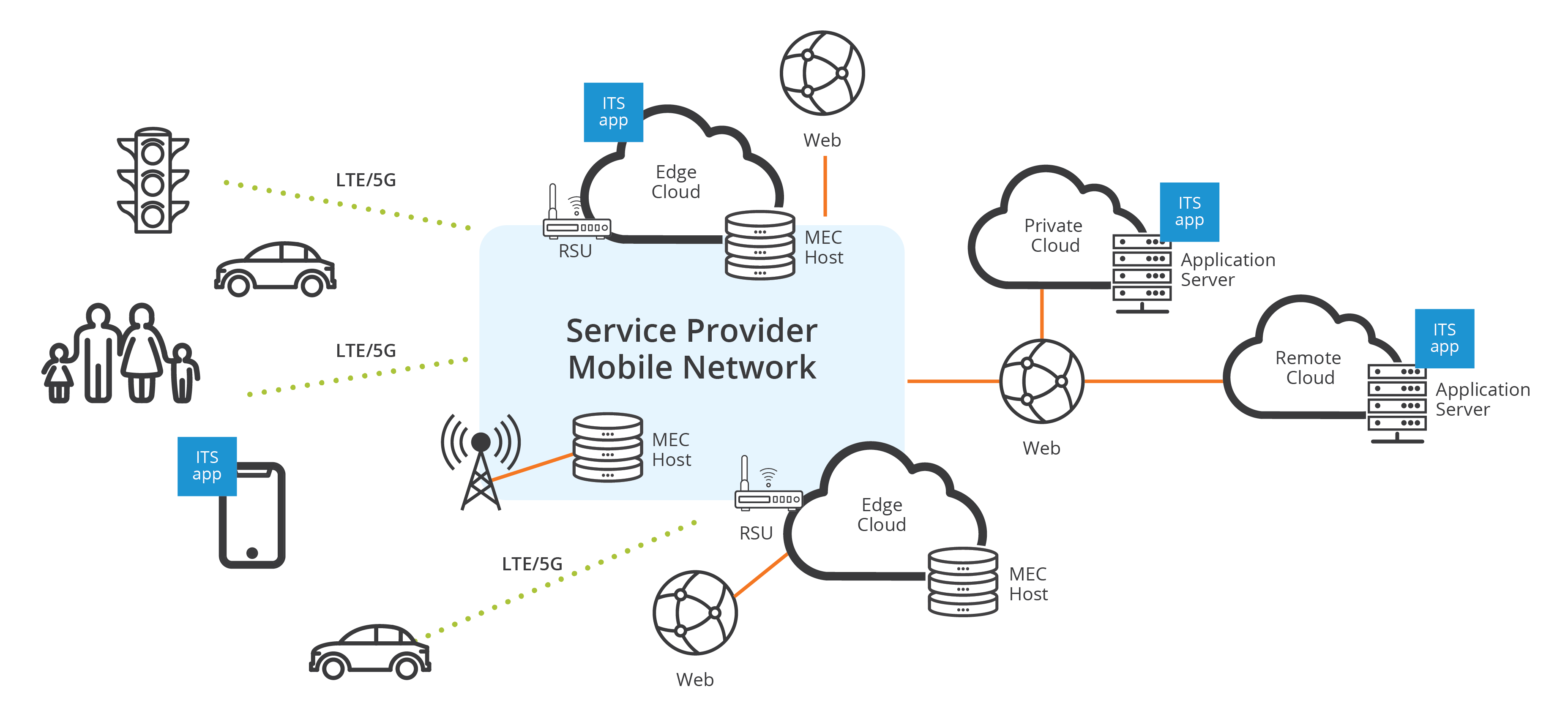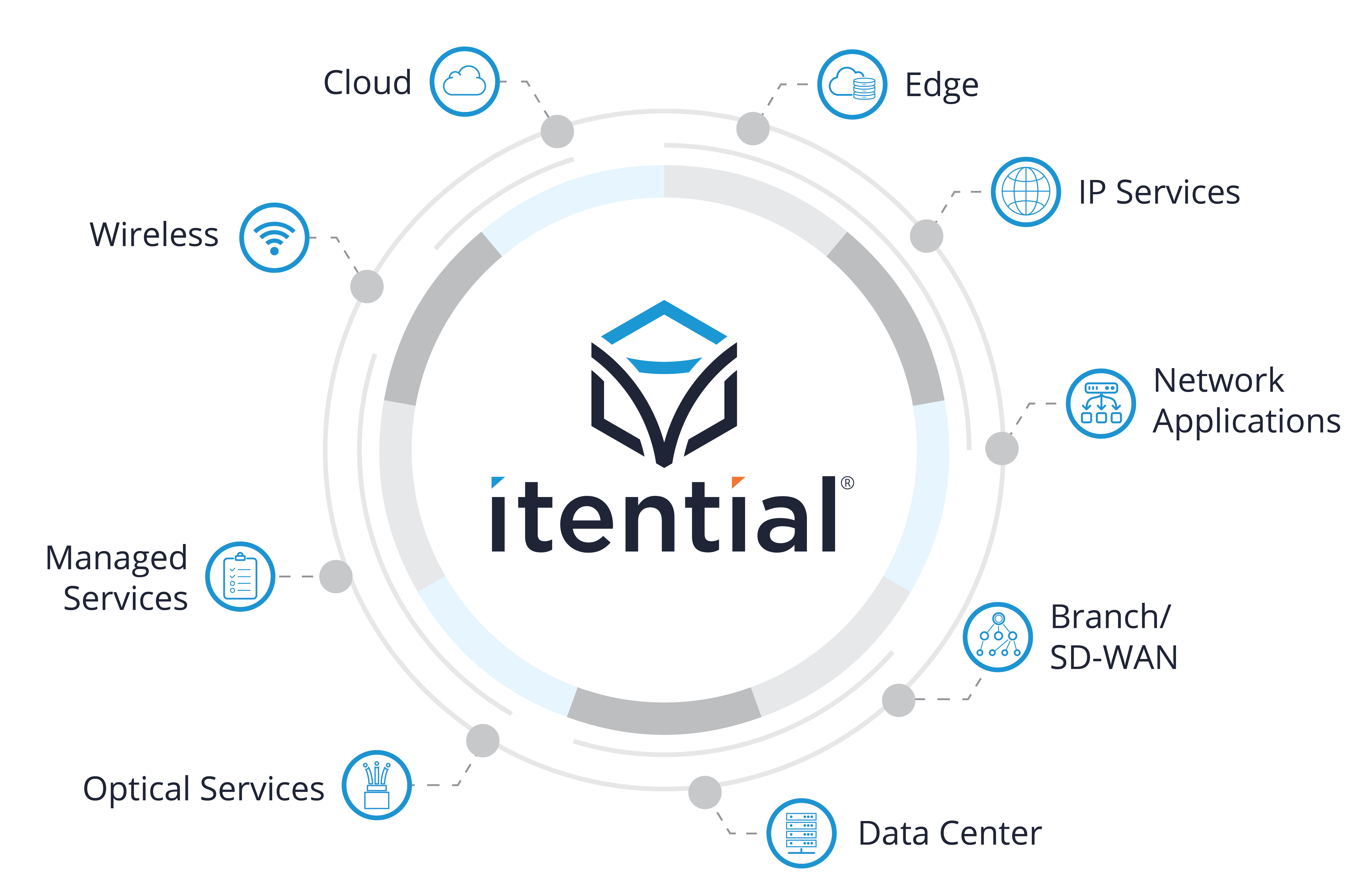The Coming 5G Explosion
You may have heard about the coming wave of 5G, the fifth-generation wireless technology that will provide higher bandwidth and advanced, low-latency network capabilities that will enable a wide range of advanced business and consumer applications.
Most global major telecommunication service providers have started to deploy 5G at mobile cell sites using different radio spectrums including millimeter wave, mid-band, and low-band. Operators will invest $1 trillion worldwide between 2018 and 2025 in 5G, according to GSMA Intelligence, a research arm of the trade group representing mobile operators. 5G in the millimeter wave spectrum will be the fastest, with speeds as high as 2Gbps on the download side.
There will be a number of challenges to this large-scale deployment. For example, in some spectrums the technology will have shorter reach and require the build-out of small-cell technology for indoor coverage. A vast new virtualized 5G infrastructure will be needed to meet the requirements for Ultra-Reliable Low-Latency Communications (URLLC) apps that require very fast response times and persistent network connectivity to Mobile Edge Compute (MEC) located at the “network edge” – or closer to businesses and consumers using these apps. Some of the applications enabled by MEC include IoT analytics, machine learning (ML), VR, drones, and autonomous vehicles. All of these will drive increased consumer, commercial, and industrial data usage.
The result of this generational buildout of mobile technology will be Smart Everything: Smart cars, smart retail, smart work, and smart factories. Imagine AI and data analytics being injected into everything and then executed at the edge of the network. Some of these applications are already here today. But the trend is about to accelerate as pervasive mobile connectivity pushes automation and intelligence to the edge.
This report examines 5G as a catalyst for virtualization and automation in both service provider and enterprise use cases, including the key challenges, use cases, and business strategies that are likely to accompany this technology wave.
5G Edge Increases Scale & Complexity
The allure of Smart Everything is clear to both businesses and consumers – we’ve all seen how technology can improve the way we handle daily tasks by automating and optimizing different parts of our lives, whether that’s getting driving instructions or shopping online. That doesn’t mean there won’t be challenges. Hype has been building about the arrival of 5G networks for many years, but the truth is that building out the infrastructure to support 5G is far more complex and challenging than you would think. The technical specs of 5G includes specific architectures for Mobile Edge Compute (MEC) as well as network functions virtualization (NFV) and software-defined networking (SDN) technology to support cloud-based applications associated with 5G and the edge infrastructure. 5G will represents the first time that service providers will be deploying infrastructure using cloud-native technology. That’s a good thing, because it means that the service provider networks can benefit from the scale, automation, and efficiency of cloud technology. But it’s also a challenge because virtual cloud technology has never been rolled out by service providers at this level of scale.
As cloud intelligence gets pushed to the edge and 5G expands both the capacity and accessibility of broadband and low-latency mobile services, what does this mean for the network? It’s clear that a higher capacity, more intelligent edge cloud is needed. But implementing it is a different story.
The first challenge is scale. The second challenge is complexity.

Scalability Challenges
First, let’s talk about scale. There will be a total of 25 billion mobile connections by 2025, up from 9.1B in 2018, according to the GSMA. 5G connections are expected to comprise 15%, or 1.4 billion of those connections by 2025. Global mobile data is expected to grow five-fold by 2024.
For example, imagine a service provider building MEC sites that are expected to support mobile data services in thousands of new locations. Currently, most service providers host MEC services in regional data centers, which might cover hundreds of square miles. Imagine, say, having 8-10 such data centers to cover a country the size of the United States. As we move to 5G, URLCC apps, and thousands of small-cell deployments, the need for such MEC capabilities is likely to increase to thousands of MEC sites per country, or even region.
In order to roll out thousands of MEC sites, service providers will need to automate the underlying infrastructure. This means using virtualization technologies and software to dynamically connect and secure thousands of sites.
Complexity
The explosion of networking connections and the scale of data being transferred will result in a dramatic increase in complexity due to the need for reconfigurability and agility across a variety of technology domains. The mobile edge infrastructure will be the first platform aiming to integrate public cloud technologies, such as containers and distributed cloud applications; traditional enterprise networking, such as WiFi and Ethernet; and telecommunications networks.
Here are just some of the complexities that are expected:
- 5G services will traverse multiple domains, including communications infrastructure, cloud services, and compute platforms.
- A wide variety of virtualization technologies will be needed, including microservices, public cloud services, SDN, NFV, and MEC
- More network components will become attached and virtualized, posing configuration and management headaches.
All of this means that the network needs to be less static. It must be dynamically provisioned and managed to quickly adapt to new applications and changes in bandwidth. This means it must have the capability to dynamically orchestrate and coordinate network resources, including security services, virtual private networks (VPNs), and connections to enterprise network devices. Service providers are going to have to adopt a model of dynamic virtualization and orchestration of the infrastructure in order to deliver this.
Imagine the capability to program the mobile edge to be event-driven, so that specific infrastructure and network connections can be deployed automatically, in response to real-time demand. This is where the service provider network will need to move in order to support 5G and MEC applications.
Virtualization Trends to Support
Cloud and virtualization technologies have lowered the cost and increased the velocity at which applications can be rolled out to both enterprise customers and consumers. The new edge infrastructure being built by operators will use virtualized edge-compute infrastructure to support 5G and ultra-reliable and low latency communications (URLLC) apps. Without edge compute, 5G would need to backhaul data to cloud resources for storage and processing, which would diminish its efficacy in delivering low latency and high bandwidth.
The process of the move to virtualization – or cloudification as it’s commonly known – is just getting started. The arrival of 5G mobile networks will be a major catalyst requiring an order of magnitude increase in scale in the handling of data, networking, and compute resources. This will increase the velocity with which service providers and enterprises move toward cloudifying and automating their infrastructure to adopt new 5G applications.
To get the full benefits of 5G, mobile service providers will need to move to a distributed edge cloud that employs virtualization and automation technology to support 5G-based applications and services. This so-called “edge compute” or MEC strategy varies among the leading mobile operators and vendors, but one thing is certain: Cloud virtualization technologies will be adopted to support the scale of infrastructure that is needed.
These technology platforms affected are in many places:
Cell Site
Edge equipment will be located at thousands of cell sites, with the potential for hundreds of servers and networking nodes in each metropolitan area.
Regional Data Centers
Carriers will need to build out virtual networking and compute capabilities in regional switching centers to aggregate networks support edge computing and 5G resources connected to the core of the network. Carriers will also co-locate new virtualized networking and compute equipment at data center providers such as Equinix. These colocation centers will support 5G services in a region that need to connect to cloud resources or the network core.
Central Office
Carrier data centers that host switching equipment will likely serve as aggregation points for services located further out on the edge. These locations will need more automation to help provision and orchestrate thousands of new connections.
Enterprise Sites
MEC resources will also be located in enterprise networks and at industrial sites such as factories or oil platforms. Enterprises are also moving to a new wave of virtualization that can integrate 5G connect. Some of these technologies include software-defined networking (SDN) and SD-WAN.
A virtualized approach to this infrastructure will provide more flexibility. It will enable software-based security services such as encryption and micro-segmentation, an approach known as network slicing. This will enable operators to optimize the network for a range of content, services, and applications, depending on latency and bandwidth requirements. A virtualized edge compute approach will also enable connectivity to cloud services using modern techniques such as APIs, which can help application developers and content providers provide new service.
Large global operators have been pursuing aggressive plans to virtualize their networks in preparation for this move. For example, in North America, AT&T and Verizon have been pursuing aggressive virtualization strategies largely to support the roll out of 5G. In recent public statements, Verizon said it has virtualized 60% of its network.
We built a virtualized intelligent edge network, which is basically we took four different networks and made one with a unified transport and single core network,” said Verizon CEO Hans Vestberg, during an analyst conference, as reported by SDxCentral.com “A lot that has been plumbed all the way from the data center to the access point. We want to have commonality of all the equipment and how we deal with it.”
AT&T has also identified edge compute and virtualization as a key part of its rollout of mobile 5G. The company recently stated publicly that it has virtualized 65% of its network. AT&T CTO John Stephens in December of 2019 told shareholders that the company has achieved annual network cost savings between 6% and 8%, driven primarily by virtualization and automation.
Worldwide operators have embraced the move to virtualization and automation as the only way to roll out 5G services in a cost-effective way. Operators moving to virtualized, cloud-based architectures will likely realize 40% in capex savings and 25% in operational expense (opex), according to recent study from Arthur D, Little, AT&T, Deutsch Telekom, and Telfonica.
Key Considerations in Edge Network Automation
As we move to the new world of the automated edge, operators will have to make major strides in changing legacy workflows and processes. In many cases today, management of networks and connections are still managed by using manual spreadsheets. But the scale and magnitude of the 5G deployment will render this impossible.
We’ve established the need for better network automation in order to support the scale and speed of needs for 5G edge applications. But how should this be executed? It will most certainly have to move to a cloud model, whereby the infrastructure is designed to be automated and response to changing conditions. Imagine a web of virtualized systems that use APIs to monitor and configure resources, without technicians cutting and pasting configurations from spreadsheets. This is the way the major public-cloud providers scale their infrastructure.
So far, many network operators have struggled with automation — and this is largely due to a combination of culture and technical challenges. On the cultural side, many network operators don’t have the required cloud-native expertise or strategy necessary to develop a dynamic cloud-based approach to scaling infrastructure.
Many processes at leading network operators are still manual and task-oriented. In order to provision new circuits for edge applications, the industry will have to reduce the time to deploy networks and resources from weeks to hours. The only solution is automation. The challenge comes in coordinating secure connections over a variety of network devices and domains, such as mobile gateways, virtual private networks (VPNs), routers, and switches – as well as business information technology (IT) systems such as IT service management (ITSM), customer relationship management (CRM), and order management systems. In addition, many of the components in an operator network are “brownfield,” meaning they include legacy equipment that may require using command line interfaces (CLIs).

What’s needed is a new management architecture built on APIs that can orchestrate new services across all of these systems, dynamically. This must include ways to orchestrate and automate not just connections to network infrastructure, but the ITSM, CRM, and order-management systems. Now that REST APIs have become ubiquitous across many of these software systems, integrating and orchestrating across domains and systems is now possible.
The task seems large but it can be broken down into an approach of solving specific use cases. The automation will come in waves. It will simplify the transition to 5G networks by delivering the following capabilities:
- Instantiating and turning up 5G elements–automation of day 0–day 2 services instantiation.
- Provisioning services across physical and virtual zones within a network.
- Orchestrating the service lifecycle and configuring the lifecycle of network services.
- Integrating with any underlying technology and southbound systems to drive end-to-end multi-domain and multi-vendor network automation.
- Rapidly operationalize automation for the deployment and management of 5G.
These are the requirements of the global service provider today. It is a large task to tackle, but like all ambitious technology goals, it will be broken down into specific use cases that enable the networking to be scaled and automated, piece by piece.
5G Network Automation Use Cases
Here are a few of the 5G use cases that are starting to emerge, that can be targeted by implementing a flexible network automation system. Automation can be applied in many areas of the network to reduce human error and speed up repetitive tasks. Additional use cases can be found in areas of network configuration, software upgrades, compliance, and service lifecycle management.
Small Cell Site Deployments

Goal: Enable service Providers to automate the configuration, testing and integration of small cell sites into the network.
Example: Zero-touch provisioning for small cell site deployments
Result: Centralized and modern planning of the design, engineering, and deployment processes. Elimination of legacy management approaches such as management via spreadsheets, etc.
Mobile Edge Compute (MEC)

Goal: Enable network operators to scale their deployment capabilities to meet on-demand requirements of low-latency MEC apps such as business analytics and AI.
Example: Automated orchestration and deployment of new MEC sites.
Result: Moving away from manual configuration and orchestration of infrastructure components.
Network Slicing

Goal: Enable network operators to define, deploy and manage a network slice through automation.
Example: Enable specific network characteristics for specific applications –for example, ULLC for self-driving vehicles.
Result: A network segment or “slice” can be provisioned across a 5G network in order to provide URLLC communications.
Service Assurance

Goal: Maintain the operational efficiency and health of the network and its devices.
Example: Build in cross-domain monitoring of network systems such as routers, switches, compute, and cell sites in order and automate network failover.
Result: Cross-domain automation supporting existing network assurance systems.
Automation Needs to be Automatic
The arrival of 5G means that it will be the first time that global operators will be building end-to-end virtualized, cloud-based services. This is both an exciting and scary time for technology leaders in charge of deploying this next-generation technology.
In order to meet the aggressive business goals and levels of hype that have been promised by next-generation technology, global operators will have to continue their investment in virtualization, cloud-native technology, and automation. This is the only way that a highly scalable, reliable, and flexible 5G network will be delivered.
In order to do this, operators will need to move away from the centralized plan of the past to a more dynamic, distributed cloud-based network that will push services out to thousands of sites at the edge of the network. It will require wide adoption of modern automation techniques from the cloud, including the use of APIs and integration with a variety of open-source technologies.
Although these projects seem daunting, they don’t require a whole-sale rip-and-replace of existing networking technology. The right automation platform can make use of existing cloud and communications technology and use techniques such as data modeling and federation to automate and orchestrate network services across domains.
It’s possible to build a closed-loop automation into today’s network to enable to the transition to tomorrow’s networks.
Automate Next-Gen 5G Networks with Itential
Itential is intelligent automation for multi-domain and multi-vendor networks. By providing a way to produce sophisticated automations quickly with a DevOps mindset, treating the network infrastructure as code, the Itential Automation Platform closes the skills gap, expands automation participation and accelerates network automation activities.
Itential’s Automation Platform is an easy to use, scalable and feature-rich network automation solution for physical, virtual and cloud networks. Leveraging an API-first and integration agnostic principles, Itential seamlessly connects disparate systems such as IT Service Management, inventory, analytics and orchestration tools for end-to-end and closed-loop network automation capabilities. Itential’s Automation Platform focuses on core Network Applications which support changes to network infrastructure across Configuration, Service Lifecycle, and Policy logic. Itential’s Automation Studio provides a low-code environment to develop multi-domain automation concepts leveraging integrations, intent-based interfaces, and network intelligent capabilities.
Itential Automation Platform Core Capabilities:
API-First
Consolidate and extend the capabilities of individual network management tools into a single network API.
Abstraction & Federation
Itential brings together processes & logic from integrated systems to use in automations.
Model Consumption
Easily consume and federate YANG, YAML and TOSCA modeling languages, abstracting the complexity from the user.
Low-Code Environment
Drag-and-drop interface enables users to easily design, build & run repeatable network automation workflows.

Get Started on your Journey to Automated 5G Networks
Itential Benefits for 5G Network Deployments & Management

Future Proof

Itential Automation Platform can adapt to new underlying technologies, mitigating the need to rip and replace or start from scratch, ensuring a future proof investment.
Vendor Agnostic

Itential is vendor agnostic, providing automation across any technology or domain. Easily plug and play with vendor or tool of choice.
Integration & Federation

Seamless Integration, federation capabilities for automation across any IT or Networking technology.
Built-In Network Intelligence

Itential’s built-in model driven network intelligence mitigates the need for change driven code development.
Ecosystem Integrations

Easily integrate the emerging 5G platform with broader set of technology ecosystems.
Simplify the Complexity

Itential is the only solution able to automate the complexity of multi-domain 5G networks.
